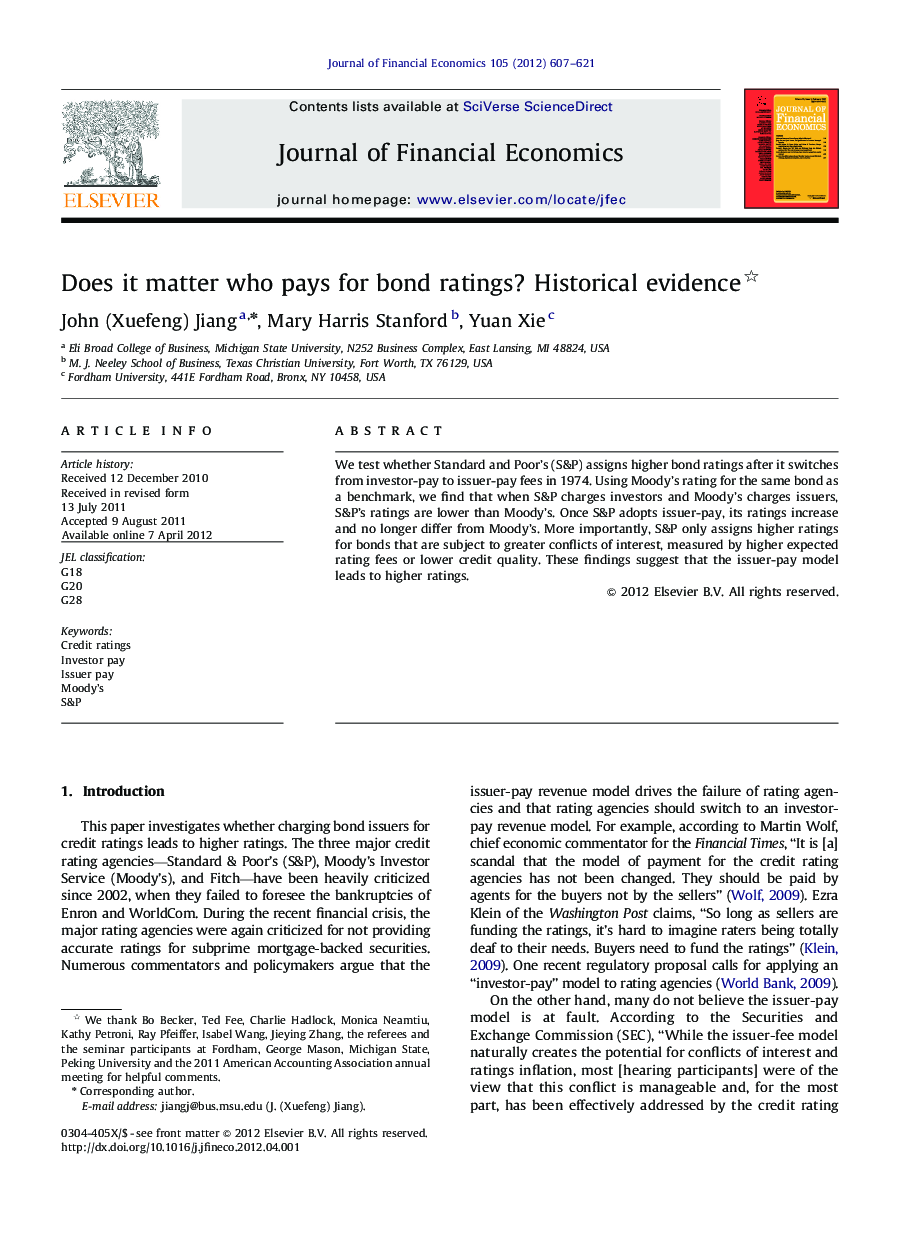| Article ID | Journal | Published Year | Pages | File Type |
|---|---|---|---|---|
| 960267 | Journal of Financial Economics | 2012 | 15 Pages |
Abstract
We test whether Standard and Poor's (S&P) assigns higher bond ratings after it switches from investor-pay to issuer-pay fees in 1974. Using Moody's rating for the same bond as a benchmark, we find that when S&P charges investors and Moody's charges issuers, S&P's ratings are lower than Moody's. Once S&P adopts issuer-pay, its ratings increase and no longer differ from Moody's. More importantly, S&P only assigns higher ratings for bonds that are subject to greater conflicts of interest, measured by higher expected rating fees or lower credit quality. These findings suggest that the issuer-pay model leads to higher ratings.
Related Topics
Social Sciences and Humanities
Business, Management and Accounting
Accounting
Authors
John (Xuefeng) Jiang, Mary Harris Stanford, Yuan Xie,
